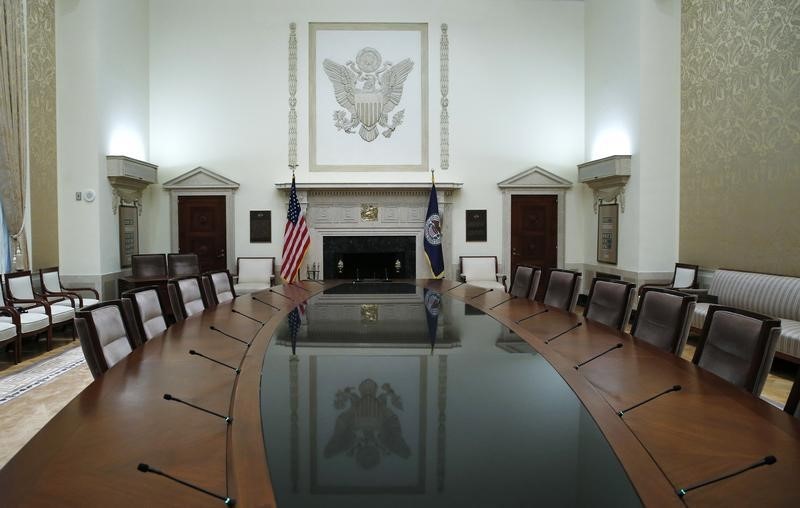(Bloomberg) -- The Federal Reserve is likely to hold off from any major policy changes with the U.S. election still in the balance, even as pressure to act mounts amid diminishing prospects for aggressive fiscal stimulus.
With no shift expected, officials could still open the door to adjusting their asset purchase program in either the statement issued by the Federal Open Market Committee at 2 p.m. Washington time, or during Chair Jerome Powell’s press conference 30 minutes later.
“If I were Chair Powell and I was on the Fed, I would want to lay as low as I possibly could. I would not want to be making any sort of news that could be injected into the political fray,” said Stephen Stanley, chief economist at Amherst Pierpont Securities LLC. “They can certainly do whatever they want or need to do with regard to forward guidance on asset purchases in December, if they’re so inclined.”
While Joe Biden has a clearer path to the White House than Donald Trump, the race is still too close to call while Republicans look set to retain control of the Senate. Treasuries rallied on the prospect that this would limit the scope for another round of massive fiscal aid.
Here’s what to watch for:
Balance Sheet
If Powell and his colleagues want to do more to support the recovery, their bond buying is the obvious place to look because they’ve already signaled interest rates will be held near zero at least through 2023.
The Fed’s balance sheet also remains the biggest element of its emergency stimulus measures that is still somewhat open ended. Policy makers said following the last meeting that they would maintain asset purchases, at $80 billion in Treasuries and $40 billion in mortgage-backed securities per month, “at least at the current pace.”
They so far haven’t pegged purchases to a specific end date, attached it to particular economic benchmarks or moved to target later-maturity bonds, and almost none of Fed watchers surveyed by Bloomberg last week saw the central bank changing that this week.
With the country still in the throes of the pandemic, this leaves the door open for the Fed to ramp up this aid lever when it feels the economy needs it. This may become a useful, if limited, tool to have as parts of the country grapple with a third wave of the virus.
Forward Guidance
Congress was unable to agree on additional stimulus before Tuesday’s election, with Democrats preferring a much larger amount of aid than Republicans in the Senate would agree to. Senate Majority Leader Mitch McConnell indicated Wednesday that the chamber’s top priority before the end of the year is passing further relief. With Senate control likely to remain in Republican hands, that bill may skew smaller.
Most Fed officials incorporated additional stimulus into their forecasts for 2020, the September meeting minutes showed. If no further fiscal support is passed, the chances of a change to the Fed’s asset purchase program before the end of the year and cuts to the central bank’s economic projections would increase.
Many policy makers have also been vocal about the need for more fiscal stimulus, including Powell, arguing that it would be more effective than monetary policy because many companies need direct grants, not Fed loans.
FOMC Statement
The FOMC may tweak its statement to say that it’s seeing new risks to the economic recovery as the virus picks up again. It might also more strongly emphasize that it’s ready to do more to aid the economy, especially as fiscal stimulus remains elusive.
What the statement and Powell in the press conference following the meeting will be careful to steer clear of, though, is any mention of the election or politics. The Fed will be careful to tread carefully this week as it seeks to maintain an image of independence.
San Francisco President Mary Daly, who isn’t a voting member of the FOMC this year, will vote at this month’s meeting, taking the place of Minneapolis Fed President Neel Kashkari, who will abstain from the meeting following the birth earlier this week of his second child. Daly will be a voting member of the committee next year.
Press Conference
Powell will likely reiterate that the central bank stands ready to do more to help the sputtering U.S. recovery. Central bankers have said for months that the fate of the economy hinges on the path of the virus.
He can also expect questions about the Fed’s emergency lending facilities, most of which expire at the end of this year. The Fed last week expanded its Main Street Lending Program to include smaller loans, bowing to pressure to make the program more accessible to a broader pool of borrowers.
With no more fiscal stimulus imminent, Main Street is one of the only pieces of relief available right now, but has to date only lent out $3.7 billion of a potential $600 billion pot. Central bank leaders have also faced criticism for the Municipal Liquidity Facility, which they argue serves as a backstop to the municipal finance market. The program has only bought two bonds.
©2020 Bloomberg L.P.

